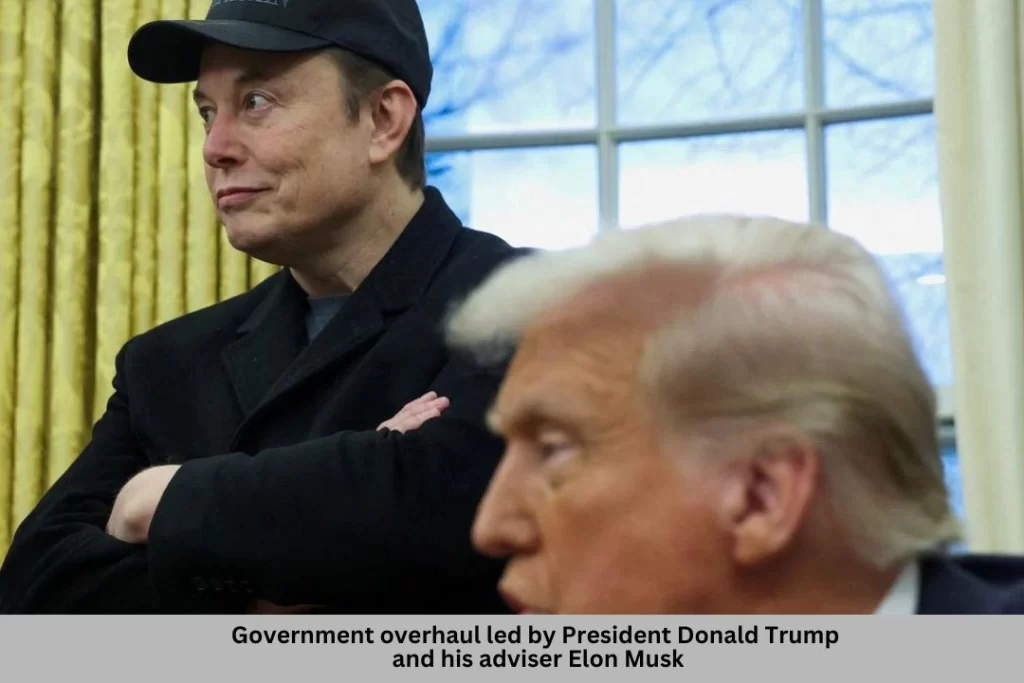A sweeping government overhaul led by President Donald Trump and his adviser Elon Musk intensified on Friday, with the dismissal of over 9,500 federal employees across multiple agencies. The restructuring drive, aimed at streamlining bureaucracy, has ignited debates over governance, efficiency, and legislative authority.
Federal workers responsible for managing public lands, veteran services, energy regulation, and agricultural oversight were among those affected. The layoffs primarily targeted probationary employees within their first year, who have fewer employment protections. This marks a significant acceleration of the administration’s efforts to downsize government operations.
In addition to the firings, roughly 75,000 employees have accepted buyout offers, as per White House figures. This voluntary departure program accounts for approximately 3% of the 2.3 million-strong civilian federal workforce. The administration argues that these cuts are necessary to curb government waste, citing the country’s $36 trillion national debt and last year’s $1.8 trillion deficit as key concerns.
Elon Musk, a vocal advocate for efficiency, has publicly called for the elimination of entire government agencies, echoing the administration’s stance on reducing federal overreach. The proposed shutdown of institutions such as the U.S. Agency for International Development (USAID) and the Consumer Financial Protection Bureau (CFPB) has sparked fierce debate among lawmakers.
Despite broad Republican support in Congress, internal discord has surfaced within the Trump administration regarding the speed and scope of Musk’s initiatives. White House Chief of Staff Susie Wiles has reportedly expressed frustration over the lack of coordination in implementing these sweeping changes.
Government watchdogs warn that the rapid downsizing risks disrupting essential services. Nearly half of the probationary staff at the Centers for Disease Control and Prevention (CDC) and the National Institutes of Health (NIH) are being dismissed, sources familiar with the job cuts revealed. Additionally, 3,400 recent hires at the U.S. Forest Service and 1,000 employees at the National Park Service are being let go.
Further reductions are expected in the coming weeks, with the Internal Revenue Service (IRS) set to lay off thousands of workers, a move that could impact tax processing ahead of the April 15 deadline. Meanwhile, agencies managing disaster relief and wildfire prevention are experiencing hiring freezes, raising concerns about the government’s ability to respond to future emergencies.
In the wake of devastating wildfires in Los Angeles, federal programs have halted the recruitment of seasonal firefighters and suspended the removal of hazardous deadwood from forests. Environmental groups and public safety advocates fear these cuts may exacerbate risks to communities vulnerable to natural disasters.
Elon Musk, the billionaire entrepreneur and founder of multiple tech enterprises, has assumed an influential role in the administration’s push for government efficiency. His Department of Government Efficiency (DOGE) initiative, staffed largely by young engineers with minimal experience in federal operations, has driven these aggressive downsizing efforts.
Treasury Secretary Scott Bessent defended the approach, comparing it to a corporate audit designed to identify best practices. “These are serious professionals conducting rigorous evaluations across agencies,” he stated in an interview with Fox Business Network.
However, critics argue that the administration’s methods prioritize ideology over cost savings, warning that indiscriminate cuts could undermine critical public services. Congressional Democrats have raised concerns about executive overreach, asserting that budgetary decisions should remain under legislative oversight.
As the administration moves forward with its restructuring plans, the debate over the balance between efficiency and governance continues to intensify. The coming weeks are expected to bring further developments as affected employees, lawmakers, and advocacy groups respond to the largest federal workforce shakeup in recent history.







